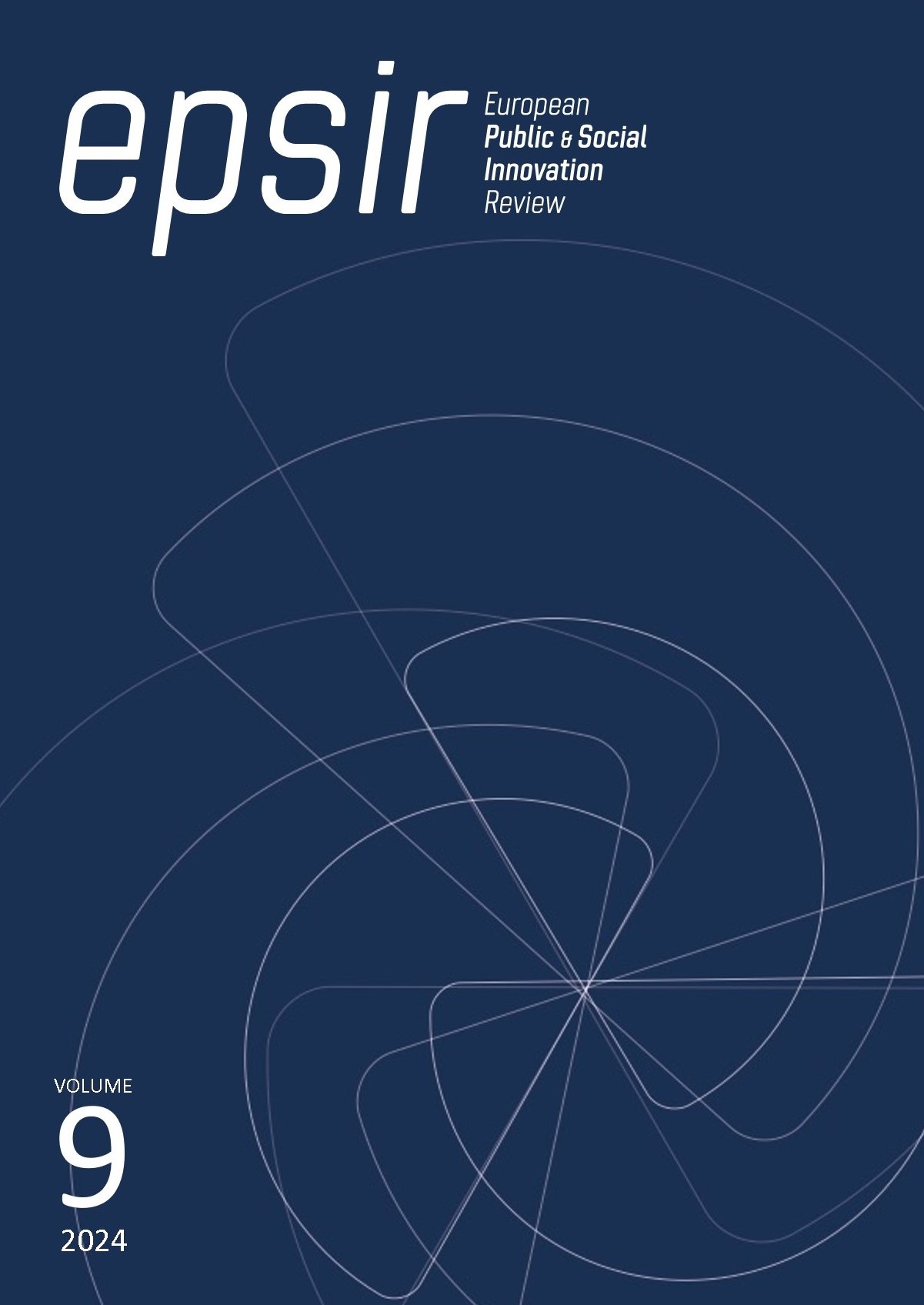Herramienta Stata en el análisis de datos cuantitativos en estudiantes de posgrado en Perú
DOI:
https://doi.org/10.31637/epsir-2024-802Palabras clave:
Aprendizaje, análisis, cuantitativo, datos, estadística, impacto, software, universitarioResumen
Introducción: Este artículo analiza el impacto del software Stata en el análisis de datos cuantitativos, una experiencia en estudiantes universitarios de posgrado. Metodología: El tipo de investigación fue experimental, aplica un enfoque cuantitativo con diseño cuasi experimental, la muestra fue no probabilístico, conformando 28 estudiantes para grupo experimental y el mismo número para el grupo control, se aplica instrumentos validados y confiables con el método de dos mitades Spearman Brown. Resultados: El análisis demuestra la comparación de promedios por grupos en ambos momentos de Preprueba y Posprueba. Los promedios fueron más altos y significativos para grupo experimental (15,86) en comparación al grupo control (12,50), el contraste de la prueba con U. Mann Whitney fue estimado al 95% de nivel de confianza y un 5% de significancia que permitió inferir su impacto positivo del aplicativo Stata. Discusión: Los hallazgos encontrados en el estudio fueron muy significativo, mejorando el nivel teórico y práctico en el campo de la investigación científica en los estudiantes al analizar la estadística con el software. Conclusiones: Se concluye que el impacto del software estadístico Stata sí influye positivamente en el análisis de datos cuantitativos.
Descargas
Citas
Arias, J. y Covinos, M. (2021). Diseño y metodología de la investigación. Repositorio CONCYTEC. https://hdl.handle.net/20.500.12390/2260
Cisneros-Caicedo, A. J., Guevara-García, A. F., Urdánigo-Cedeño, J. J. y Garcés-Bravo, J. E. (2022). Técnicas e instrumentos para la recolección de datos que apoyan a la investigación científica en tiempo de pandemia. Domino de las Ciencias, 8(1), 1165–1185. https://doi.org/10.23857/dc.v8i1.2546 DOI: https://doi.org/10.23857/dc.v8i1.2546
Escobar, M., Fernández, E. y Bernardi, F. (2022). Análisis de datos con Stata (2ª ed.). Centro de investigaciones sociológicas. https://bit.ly/4cFsMiG
García García, J. I., Imilpán Rivera, I., Díaz Levicoy, D. y Arredondo, E. H. (2021). Las medidas de tendencia central en libros de texto de séptimo básico de Chile. Conrado, 17(81), 261-268. https://bit.ly/3OwXXSd
Gea, M., Batanero, C. y Roa, R. (2014). El sentido de la correlación y regresión. Números, 87, 25-35. https://bit.ly/456m3ug
Guerrero Támara, V. (2022). Enfoque cuantitativo: taxonomía desde el nivel de profundidad de la búsqueda del conocimiento. Llalliq, 2(1), 13-27. https://bit.ly/3zvFNwy DOI: https://doi.org/10.32911/llalliq.2022.v2.n1.936
Hernández-Sampieri, R. y Mendoza, C. (2018). Metodología de la investigación. Las rutas cuantitativa, cualitativa y mixta. McGraw-Hill Education. https://bit.ly/4crNr9Q
Hernández-Sampieri, R., Fernández-Collado, C. y Baptista-Lucio, P. (2014). Metodología de la investigación: Análisis de los datos cuantitativos. McGraw-Hill Education. https://bit.ly/3XXbl8I
Hidalgo, A. (2019). Técnicas estadísticas en el análisis cuantitativo de datos. Revista Sigma, 15(1), 28-44. https://bit.ly/4crNnH8
Matzumura-Kasano, J., Gutiérrez-Crespo, H., Ruiz-Arias, A. y Huamán-Carhuas, L. (2021). Utilización de aplicativo Remind como herramienta de apoyo en la enseñanza de investigación básica. Revistas de Investigación UNMSM, 82(3), 9-21. https://doi.org/10.15381/anales.v82i3.20470 DOI: https://doi.org/10.15381/anales.v82i3.20470
Mercado Mercado, E., Fernández Macías, E. y Bernardi, F. (2012). Análisis de datos con Stata. Cuadernos metodológicos. Centro de Investigaciones Sociológicas. https://bit.ly/3QFTf5I
Millones, T., Alencar, S. y Bueno, S. (2021). Dificultades en la enseñanza y el aprendizaje de la estadística: comparación de investigaciones de Perú y Brasil, 2009 a 2017. Revista Research, Society and Development, 10(12). https://doi.org/10.33448/rsd-v10i12.19975 DOI: https://doi.org/10.33448/rsd-v10i12.19975
Perez-Leon, G. [gabriel-perez-leon]. (11 de septiembre de 2023). Importancia del análisis de datos. LinkedIn. https://bit.ly/40EUrev
Sierra, J., Palmezano, Y. y Romero, B. (2022). Causas que determinan las dificultades de la incorporación de las TIC. Aulas de clases. https://bit.ly/3XO8m2c
Solorzano, F. C., Apaza, H. A. C., Vilcanqui, B. M., Mercado, C. M. Z. y Polo, A. E. A. (2022). El uso de las pruebas de hipótesis en la investigación educativa. Universidad y Sociedad, 14(1), 701-711. https://bit.ly/3RTvSqJ
Vásquez, C. y García, A. (2020). La educación estadística para el desarrollo sostenible en la formación del profesorado. Profesorado. Revista de Currículum y Formación de Profesorado, 24(3), 125-147. https://doi.org/10.30827/profesorado.v24i3.15214 DOI: https://doi.org/10.30827/profesorado.v24i3.15214
Vela Meléndez, L. y Guerrero Carrasco, G. E. (2020). Guía para la construcción de modelos de regresión lineal clásico y modelos de elección binaria con STATA 15. https://bit.ly/3XPdVO7
Descargas
Publicado
Cómo citar
Número
Sección
Licencia
Derechos de autor 2024 Lolo Caballero Cifuentes, Richard Santiago Quivio Cuno, Sandra Yaquelin Gutiérrez Guadalupe, Mario Jaime Andia, Jesús Alegre Huerta, Juan Carlos Huamán Hurtado, Luz Sito Justiniano

Esta obra está bajo una licencia internacional Creative Commons Atribución-NoComercial-SinDerivadas 4.0.
Authors who publish with this journal agree to the following terms:- Authors retain copyright and grant the journal right of first publication with the work simultaneously licensed under Creative Commons Non Commercial, No Derivatives Attribution 4.0. International (CC BY-NC-ND 4.0.), that allows others to share the work with an acknowledgement of the work's authorship and initial publication in this journal.
- Authors are able to enter into separate, additional contractual arrangements for the non-exclusive distribution of the journal's published version of the work (e.g., post it to an institutional repository or publish it in a book), with an acknowledgement of its initial publication in this journal.
- Authors are permitted and encouraged to post their work online (e.g., in institutional repositories or on their website) prior to and during the submission process, as it can lead to productive exchanges, as well as earlier and greater citation of published work (See The Effect of Open Access).



